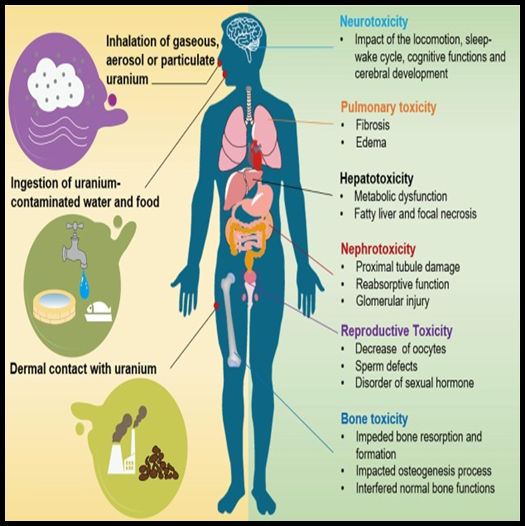BARC STUDY: 60 MCG URANIUM IN WATER SAFE
Why in the news?
- Bhabha Atomic Research Centre (BARC) study concludes 60 mcg/litre of uranium in drinking water is safe.
- Suggests the new national standard of 30 mcg/litre may be counterproductive.
 source:lotusarise
source:lotusarise
Standards and Regulations:
- Previous acceptable level set by the Atomic Energy Regulatory Board (AERB) was 60 mcg/litre.
- The Bureau of Indian Standards (BIS) reduced the limit to 30 mcg/litre in 2021, aligning with WHO guidelines.
- BARC study argues this lower limit increases purification costs without health benefits.
About the Atomic Energy Regulatory Board (AERB):
- Established: November 15, 1983, under the Atomic Energy Act, 1962.
- Mission: Ensure ionising radiation and nuclear energy use doesn’t risk health or environment.
- Authority: Derived from Atomic Energy Act and Environment (Protection) Act, 1986.
- Composition: Up to five members, including full-time Chairman and Member-Secretary.
- Responsibility: Accountable to the Atomic Energy Commission.
- Functions: Regulate industrial safety for DAE units under the Factories Act, 1948.
- Support: Administrative support from DAE for budget, parliamentary work, and establishment.
About Bhabha Atomic Research Centre (BARC):
- India’s premier nuclear research facility.
- Headquartered in Trombay, Mumbai, Maharashtra.
- Operates under the Department of Atomic Energy, overseen by the Prime Minister.
- Multi-disciplinary research centre covering nuclear science, engineering, and related areas.
- Research backbone of the Nuclear Power Corporation of India (NPCIL).
History:
- Conceived by Dr. Homi Jehangir Bhabha.
- Established Tata Institute of Fundamental Research (TIFR) in 1945.
- Founded Atomic Energy Establishment, Trombay (AEET) in January 1954.
- Renamed Bhabha Atomic Research Centre (BARC) after Bhabha’s death in 1966.
Associated Article:
https://universalinstitutions.com/new-uranium-isotope/ |
source:lotusarise




